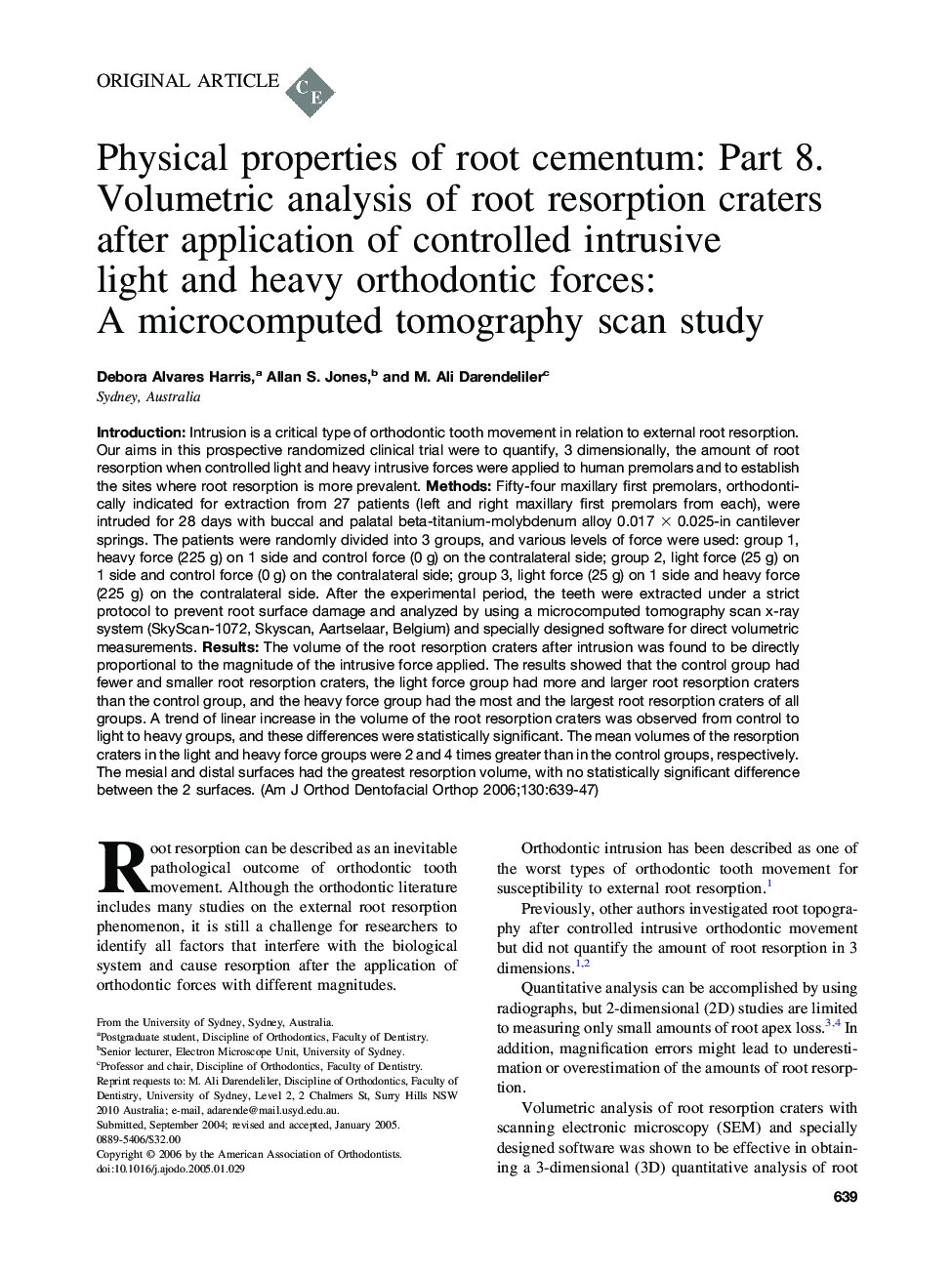| Article ID | Journal | Published Year | Pages | File Type |
|---|---|---|---|---|
| 3119886 | American Journal of Orthodontics and Dentofacial Orthopedics | 2006 | 9 Pages |
Introduction: Intrusion is a critical type of orthodontic tooth movement in relation to external root resorption. Our aims in this prospective randomized clinical trial were to quantify, 3 dimensionally, the amount of root resorption when controlled light and heavy intrusive forces were applied to human premolars and to establish the sites where root resorption is more prevalent. Methods: Fifty-four maxillary first premolars, orthodontically indicated for extraction from 27 patients (left and right maxillary first premolars from each), were intruded for 28 days with buccal and palatal beta-titanium-molybdenum alloy 0.017 × 0.025-in cantilever springs. The patients were randomly divided into 3 groups, and various levels of force were used: group 1, heavy force (225 g) on 1 side and control force (0 g) on the contralateral side; group 2, light force (25 g) on 1 side and control force (0 g) on the contralateral side; group 3, light force (25 g) on 1 side and heavy force (225 g) on the contralateral side. After the experimental period, the teeth were extracted under a strict protocol to prevent root surface damage and analyzed by using a microcomputed tomography scan x-ray system (SkyScan-1072, Skyscan, Aartselaar, Belgium) and specially designed software for direct volumetric measurements. Results: The volume of the root resorption craters after intrusion was found to be directly proportional to the magnitude of the intrusive force applied. The results showed that the control group had fewer and smaller root resorption craters, the light force group had more and larger root resorption craters than the control group, and the heavy force group had the most and the largest root resorption craters of all groups. A trend of linear increase in the volume of the root resorption craters was observed from control to light to heavy groups, and these differences were statistically significant. The mean volumes of the resorption craters in the light and heavy force groups were 2 and 4 times greater than in the control groups, respectively. The mesial and distal surfaces had the greatest resorption volume, with no statistically significant difference between the 2 surfaces.
